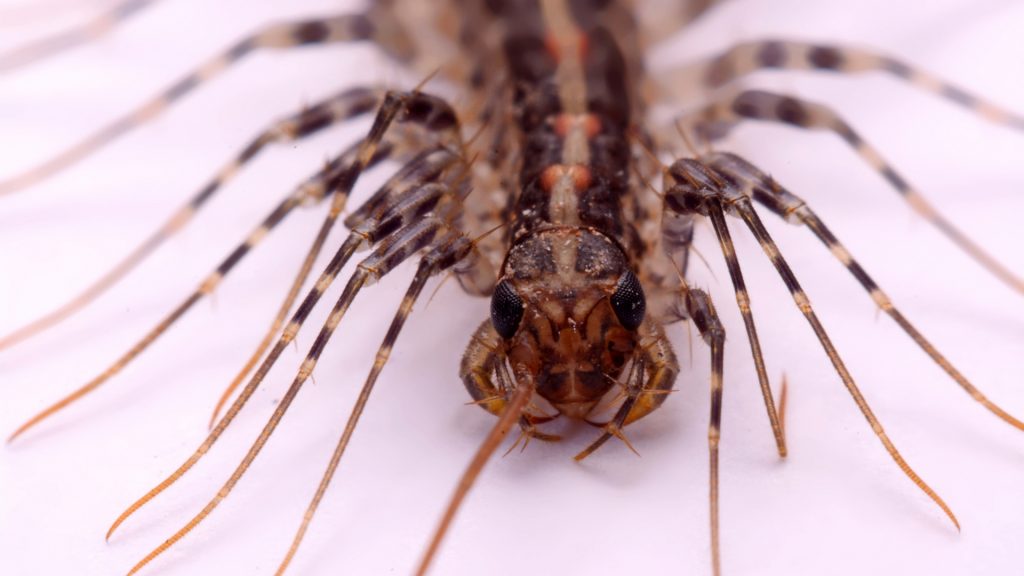Table Of Content

Although the pests are generally not harmful, issues can arise when centipedes live close to people. The trick to getting rid of house centipedes is to get rid of other bugs and creatures that they prey on. This critter is a common household pest, seeking out a moist environment and solid food source in the comforts of your home. While not overly dangerous to people, a centipede might not be a welcomed guest. Centipedes are generally considered nuisance pests, as they do not pose significant health or property threats. However, all house centipedes have poison jaws with which they inject venom into their prey.
Are Cat Faced Spiders Poisonous? Uncovering the Truth
Not to mention, they are not dangerous, and their bites are not venomous. But if you still feel uncomfortable having them in your home, trap them or call a pest control professional. Aside from homes, house centipedes may also enter business establishments and buildings. They can enter by crawling through small gaps and cracks in walls, doors, or the foundation. These creepy arthropods can also pass through concrete slabs, unexcavated areas, uncapped blocks, and floor drains that have no water traps.
Are House Centipedes Dangerous?
Millipede Animal Facts - AZ Animals
Millipede Animal Facts.
Posted: Fri, 10 Feb 2023 08:00:00 GMT [source]
Once again, those who are more sensitive to insect allergens might experience more irritation than most. So, it’s a good idea to seek medical attention if you experience an infection or serious reaction. Now, just because the house centipede isn’t dangerous to humans, that doesn’t mean that you should pick them up or try to interact with them! House centipedes can bite you, but those instances are pretty rare. Because house centipedes help you control infestations of other, more bothersome pests, there’s little reason to exterminate them.
House centipedes won’t harm people or homes.
For example, people with diabetes may experience more severe skin reactions and infections following a centipede bite. People with centipede bites may experience local reactions in the affected area, but the symptoms will typically resolve within a few hours to a few days. To remove potential food sources of house centipedes, clean your house regularly. Remove clutter and vacuum every corner at least once a week. To reduce moisture, empty the refrigerator drip pan regularly. But more importantly, they are fierce predators of small household pests such as cockroaches and bed bugs.

Are House Centipedes Dangerous & Do They Bite? [Answer]
Coleoptrata has developed automimicry in that its tail-like hind legs present the appearance of antennae. When the centipede is at rest, it is not easy to tell its cranial end from its caudal end. To avoid bites while outdoors, be careful when reaching into woodpiles or under stones. The pests lurk in dark, hidden areas and may bite people or pets if they appear to pose a threat.

Consider house centipedes a warning of an even bigger pest problem.
These simple steps can create a formidable barrier against these nocturnal hunters. Additionally, keeping your outdoor spaces free from debris and clutter goes a long way in dissuading house centipedes from seeking refuge near your home. House centipedes are mysterious, speedy creatures that can give anyone a startle when encountered in their homes. As an ex-professional pest control technician and DIY pest control expert, I understand the unease these arthropods can bring. The toxins are responsible for the inflammation and mild burning sensation we discussed earlier.
Symptoms of Centipede Bites
House centipede bites are mostly venomous for their prey and not very dangerous for humans. Unless you’re allergic to their venom, the most discomfort you’ll experience is mild pain and swelling. They also rarely cause any serious health issues to dogs or cats. House centipedes can actually be beneficial as they prey on other common household pests like spiders, termites, bed bugs, and cockroaches. However, if their presence is unsettling to you, or if you have a severe infestation, you may consider taking preventive measures. However, some centipedes have venom which produces a variety of toxins, including chemicals such as histamine, serotonin, and cardio-depressant toxin-S.
Their numerous pairs of legs and rapid movement make them highly adaptable to different surfaces. House centipedes, while generally harmless, can appear unsettling. By following the indentification and preventive tips outlined in this guide, you can significantly reduce the likelihood of a house centipede infestation.
What Do Common House Centipedes Look Like?
Hi Gabriel, Your very detailed photos are a wonderful addition to our website. We are very happy to learn that you were able to self identify this House Centipede. House centipedes can bite when they feel threatened, but their bites are not typically a cause for concern. These creatures are more inclined to avoid humans and are generally harmless.
Photograph by mourad-harzallah via iNaturalist, used under a CC BY 4.0 license. There are six larval instars or molts, and four post-larval instars before the centipedes reach maturity. Females have been known to survive for several years and produce up to 150 young. During the daytime, the centipedes inhabit dark, damp locations in the home and come out at night to forage for prey. The prognosis after a centipede bite is excellent, although some people report anxiety.
House centipedes are attracted to wet areas with high humidity levels inside your house, such as bathrooms and damp basements. They are also attracted to areas where there are insects or other small arthropods. These multi-legged creatures usually enter houses during spring and summer but rarely appear in winter and colder months. Coleoptrata showed the ability to distinguish between possible prey, avoiding dangerous insects.
The giant desert centipede, AKA the giant Arizona desert centipede, also abounds in North America and will sting if provoked. Here are the most common types of centipedes you’ll find in your house. Yes, there are natural repellents like essential oils such as lavender, peppermint, or citrus that can help deter house centipedes. Placing cotton balls soaked in these oils in potential entry points can discourage them from entering.
The house centipede originated in the Mediterranean but now can be found across Europe, Asia, and North America. Because they are nocturnal hunters, House Centipedes often startle folks while they are relaxing and watching television. We seriously doubt that people would have much of a chance of handling a House Centipede, because as your email indicates, they are quite fast.
If a house centipede bites you, it is very unlikely to cause significant harm unless you have a severe allergic reaction to insect bites. Centipede bites are not neurotoxic to humans, which means that they are not toxic. Complications from house centipede bites can occur due to infections and skin damage around the bitten area.

No comments:
Post a Comment